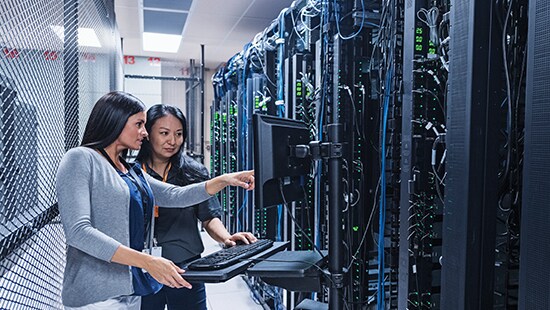3 Crucial Lessons for Data Centers in a Water-Scarce World

Here’s a reasonably typical day for many of us in 2019:
You wake up and check your phone for news and messages. During breakfast, you ask your smart speaker about the weather and listen to streaming radio. As you drive to work, you use a navigation app and listen to a podcast. During the workday, you use email, save files to the cloud and videoconference with colleagues around the world. You stream music while working and check your social media accounts a few times. Back home at night, you video-chat with your kid, who’s away at college. Then you watch streaming video, because who has cable anymore anyway? Before bed, you read a book on your e-reader.
You may use some or all of these services in your own life. The point is: In 2019, we use data all day long. That data is processed by data centers, the buildings full of servers that are strewn around the world by the thousands and keep the cloud humming. Those servers produce heat, so data centers must be cooled. Most use water for that. Typically, that takes about eight million gallons per year just for one data center. And that’s where the rubber hits the road.
You see, water is not as cheap and plentiful as you may think. In fact, water scarcity is increasingly the new normal in many parts of the world. And it’s not just California or Texas, or Mumbai, Beijing and Sao Paulo. Just like the current boom in data traffic, water scarcity is occurring in regions all around the world. And because of latency (the time it takes the data you request to reach you), you can’t simply build all your data centers in places that are unaffected. They must be close to users. Bottom line: Data centers simply can’t afford to ignore water risk.
At Ecolab, we’ve been helping data centers develop smart water management practices for quite some time now. And here are a few lessons we’ve learned:
- Water scarcity is a risk to business: Today, in general, water is cheap. But it may well become more expensive as it gets scarcer. Water scarcity also can mean that there simply isn’t enough water to run a data center, which means outages for users. Governments may increase fees and tighten regulations. And neighboring communities may start complaining about water-hogging data facilities, which means reputational damage.
- Location, location, location: To do something about your water risk, you have to know what it is. That’s different in every location, based on factors like the availability of water, prevailing weather patterns and soil conditions. Ecolab’s Water Risk Monetizer, a publicly available, free online tool, helps you determine the water risk for your location by putting dollar value on it. (You can check out a real-world data center example here.) The Ecolab Smart Water Navigator, another free, public tool, helps you address water risk by offering a tailored, location-based action program for each facility.
- It takes data to protect data: What practical steps can a data center take to manage water risk? Reducing water usage by improving the cooling system’s efficiency is one thing. Reusing and recycling water, which lessens dependence on outside water, is another. For many locations, it’s even a good idea to keep a back-up supply of water on-site, in case of interruptions. What these things have in common is that they work best with smart water meters, such as Ecolab’s 3D TRASAR™ Technology, which constantly monitors the chemistries added to water and allows for real-time corrections to prevent problems such as scaling, biological buildup and corrosion. The sensors are connected through the internet of things, which allows us to discern trends using advanced data analysis and predict issues before they occur.
These lessons are crucial, because the world is going to be consuming more data, not less. Smart home devices are proliferating, from connected doorbells to light bulbs and everything in between. In many parts of the world, smartphone adoption is nowhere near saturation. And in the meantime, telecom operators are building super-fast 5G networks that will invite even more data use and creation.
That’s why we need to get this right. Our digital lives depend on it, to say nothing of that even more vital resource – water.
You can find more information in “Water Scarcity Could Put Your Data Center at Risk,” a whitepaper by Ecolab’s Corporate Vice President of Sustainability Emilio Tenuta for the Uptime Institute.


